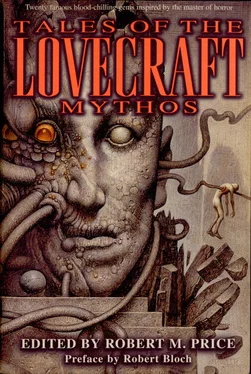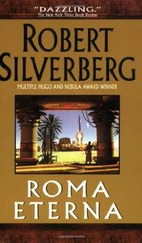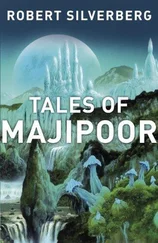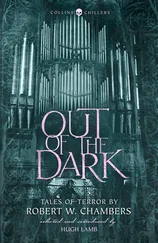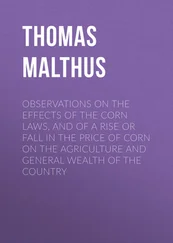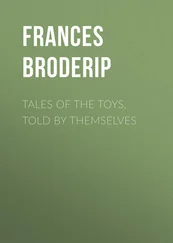Tales of the Lovecraft Mythos
edited by Robert M. Price
Dedicated to the memory of Lin Carter,
Grand Archivist of the Cthulhu Mythos
At the first World Fantasy Convention, in 1975, the mayor of Providence gave me a key to the city.
I appreciated the gesture, but it wasn’t necessary. My welcome to Providence had come almost half a century earlier, in 1927, from the hand of its distinguished citizen, Howard Phillips Lovecraft.
His was the hand penning the stories which enthralled me when I first encountered them in the pages of Weird Tales magazine. And early in 1933 it was through that same hand I was ushered into Lovecraft s private world as we began a personal correspondence. Thus he opened the gates of his cherished Providence to me long before I ever actually arrived there.
Not every reader of his work was so singularly fortunate. But all were free to enter the realms he roamed, realms born and borne out of imagination and dreams.
In tales embodying a revised concept of the cosmos, Lovecraft literally re-created the universe, restructuring space and time, reconciling ancient witchcraft with modern mathematics. He invented blasphemous books of forbidden magic, secret cults worshipping star-spawned monstrosities lurking beneath land or sea. As a sardonic twist he altered the geography of his beloved New England and linked its legends to those of his own devising.
Avid readers soon became familiar with the look of Innsmouth, the horror of Dunwich, the contents of Miskatonic University’s archives in archaic Arkham. Many virtually memorized his Mythos.
Some of them didn’t stop there, but went on to imitate and emulate him in tales of their own. Through the years H. P. Lovecraft has shaped and influenced fantasy and horror fiction more than any other writer in the genre. The stories which Lovecraft scholar and authority
Robert M. Price chose for this compendium illustrate how his contemporaries responded to Cthulhu’s call.
I myself was one of them, though later years found me straying far afield. But in a sense all of us began our journey in Providence, guided by the hand of the man we referred to as “HPL.” And our stories included here, whether the early efforts of aspiring authors or the deliberate homage of established writers, serve as testament to his impact on his colleagues.
Truly, they are Tales of the Lovecraft Mythos.
— Robert Bloch
Many readers of the present volume will recognize a more than coincidental similarity between it and August Derleth’s Tales of the Cthulhu Mythos anthology that appeared more than two decades ago, in 1969. Derleth had compiled a prime collection of tales written by various authors under the influence of H. P. Lovecraft and employing the props of his system of “artificial mythology” which Derleth (but not Lovecraft) called “the Cthulhu Mythos.” To this collection Derleth prefixed a brief exposition of the Mythos as he understood it, so as to provide a context to help the reader better understand the stories that were to follow. It seems appropriate, therefore, in the present case to provide an analogous exposition, especially since the scholarship of the last decades has seen a major reinterpretation of Lovecraft’s Mythos.
As the title of this volume implies, there has even been a shift in nomenclature in regards to the Mythos. Especially in reference to the body of fictitious lore as it appears in the stories of Lovecraft himself, it seems better to refer to it as “the Lovecraft Mythos” after its creator, rather than “the Cthulhu Mythos” after one of the dread entities mentioned in it. As with most things, we must understand the origin and development of the Mythos before we can venture to say we know what it is. The definition of a thing includes its history. Hence the following sketch of the Lovecraft Mythos and its evolution into the Cthulhu Mythos.
* * *
Lovecraft, inspired no doubt by the fanciful mythologies created for various purposes by Lord Dunsany, Robert W. Chambers, and even Madame Blavatsky, ventured to weave a web of his own mythology that would in its evocative fragmentariness and misty archaism simulate the eerie and august suggestive power of genuine ancient lore. He began in “The Nameless City” (1921) by creating the mad kahin (poet-soothsayer) Abdul Alhazred and his “unexplainable couplet” that would loom so large in all subsequent Mythos fiction: “That is not dead / Which can eternal lie,/ And with strange aeons / Even death may die.”
By “The Hound” one year later, Alhazred had been made the author of a banned book of blasphemies, the Necronomicon , a title so mysterious that even Lovecraft did not understand the true meaning of it. The name came to him in a dream, apparently the fortuitous creation of his subconscious, scrambling elements of the Greek language in which Lovecraft was reasonably learned. In a waking state he reasoned out the meaning as “Image of the Laws of the Dead,” taking the middle syllable as the Greek nomos , “law,” and the last as representing ikon , “image.” In both guesses he was quite wrong, as S. T. Joshi has shown. Rather, on analogy with Manilius’s Astronomicon , a title Lovecraft knew, “Necronomicon” simply means “Concerning the Dead,” or idiomatically, “The Book of the Dead.” At any rate, the Mythos was off and running.
In 1926 he introduced dreaming Cthulhu, a titan based in part on Dunsany’s snoring creator Mana-Yood-Sushai, in a story called “The Call of Cthulhu,” itself suggested in large measure, I am sure, by certain evocative phrases concerning dead and dreaming gods in Dunsany’s “A Shop in Go-by Street.” The interdimensional being Yog-Sothoth first appeared in The Case of Charles Dexter Ward (1927) and was later central to the premise of “The Dunwich Horror” (1928). Azathoth the daemon-sultan made his debut in The Dream-Quest of Unknown Kadath (1926-7). Nyarlathotep, a kind of combination of Thoth-Hermes and the Antichrist, first appeared as early as 1920 as a sinister charlatan in the dream-inspired prose-poem “Nyarlathotep.” This name was probably another subconscious borrowing, this time from Dunsany’s names Mynarthitep and Alhireth-hotep. The fifth of the five major Lovecraftian entities was Shub-Niggurath (surely from Dunsany’s Sheol-Nugganoth). This creature would be variously de-Over the years, often in his ghost-written “revision” tales, HPL would introduce new devil-gods. Shub-Niggurath herself started her literary life in a revision tale, “The Last Test” (1927). Other entities never or seldom ventured into the fiction Lovecraft claimed as his own. These included Nug and Yeb, Rhan-Tegoth, Ghatanothoa, and Yig, Father of Serpents.
The most important addition to the original group was Tsathoggua, a furry black bat-toad deity worshipped in ancient Hyperborea. This creature was the creation of Lovecraft’s friend and correspondent Clark Ashton Smith. Lovecraft simply adopted Tsathoggua into his own pantheon, just as Smith began making references to the Necronomicon and Yog-Sothoth.
It was by this sort of cross-referencing and flattery by imitation that the Lovecraft Mythos began quickly to be transmuted into the Cthulhu Mythos. Lovecraft good-naturedly began to encourage his young proteges as well as his colleague-correspondents like Smith to expand the lore by additions of their own. When young Robert Bloch invented Necronomicon analogues including Ludvig Prinn’s Mysteries of the Worm (Lovecraft supplied the Latin “original” De Vermis Mysteriis ) and the Comte D’Erlette’s Cultes des Goules , or Cults of the Ghouls (Bloch’s invention in truth, despite Derleth’s occasional later claims to paternity), Lovecraft showed himself happy to include ominous references to them in his own tales.
Читать дальше
